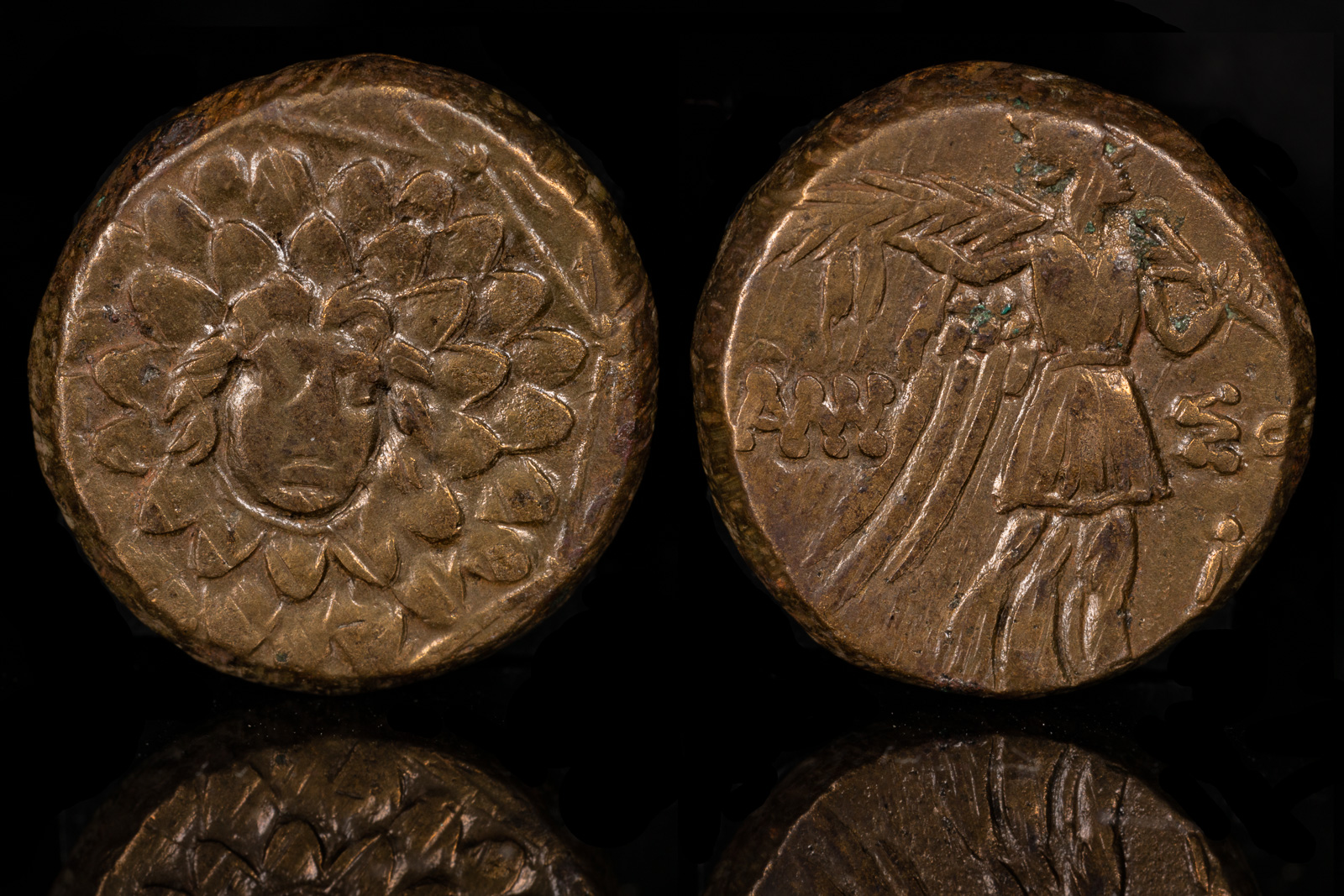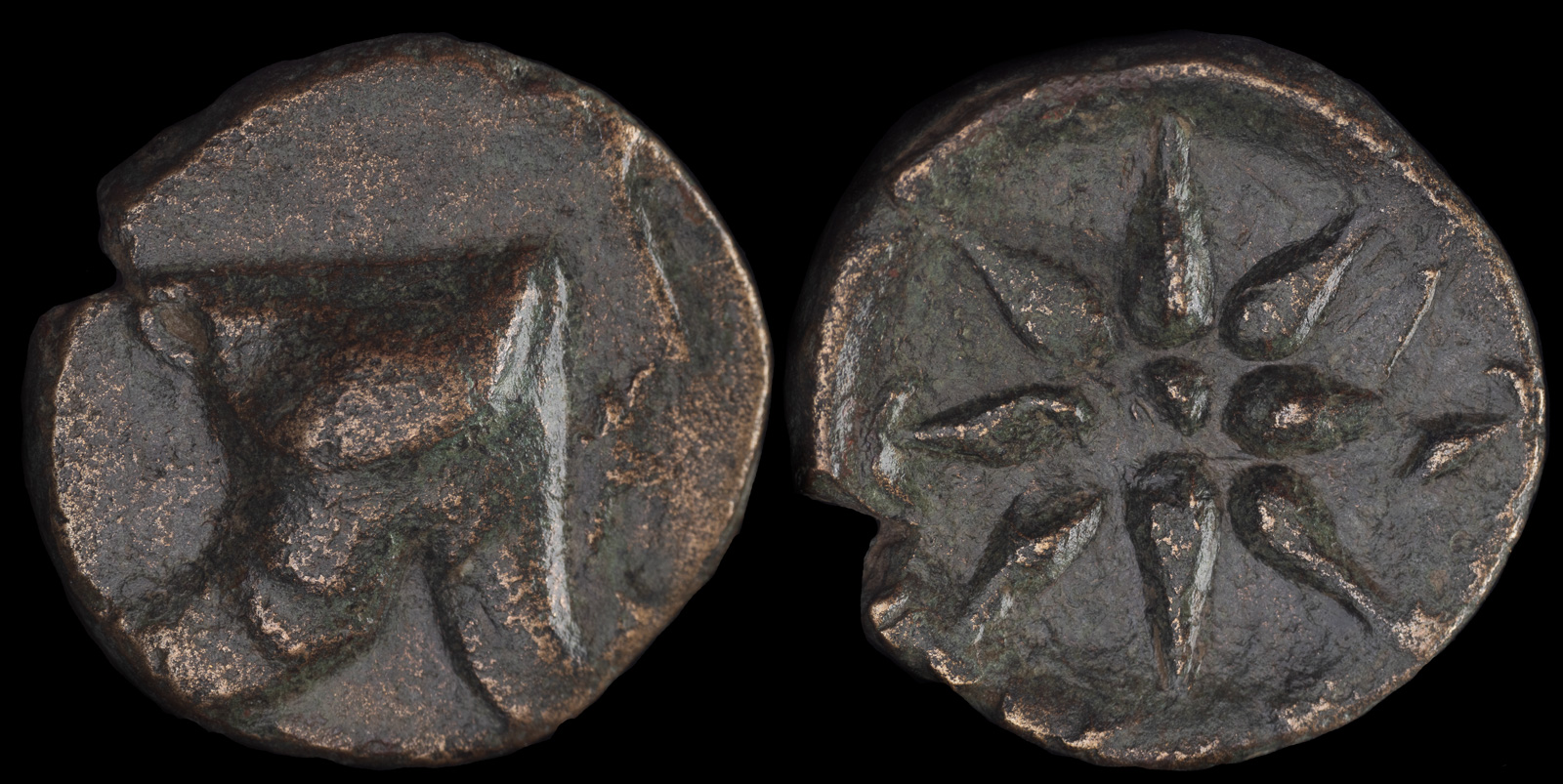
Pontos, Amisos
435-370 BCE
3.93g, 15mm
Head of Hera left, wearing stephanie.
Owl, wings spread facing. “BAΛΛI” below
HGC 7, 229 var
Amisos was a colony of Miletos that was settled in the 6th century BCE. It grew into a very prosperous town that was easily defended due to being enclosed on two sides by the sea and another by a ravine.
In the 5th century BCE the city became part of the Delian league and was renamed Peiraios after the Athenian Pericles. When Alexander the Great occupied the area, the name returned to Amisos and the city returned to democratic rule.
It eventually became part of the Pontic Kingdom under Mithradates I. The coin below was minted during the time of Mithradates VI.

Pontos, Amisos
Time of Mithradates VI, c. 120-63 BCE
Æ 18mm., 8,52g
Obv. Aegis with Gorgoneion in centre.
Rev. ΑΜΙ-ΣΟΥ, Nike advancing right holding wreath and palm; monogram to lower right.
SNG Cop. 167
Not much remains of the ancient city today. Parts were destroyed for a radar base and most of the area is off limits as a military installation. The rest is the modern day city of Samsun.

Pontos. Uncertain mint (Amisos?)
circa 130-100 BCE
Æ 20mm, 6,34g
Phrygian cap (bashlyk) left; bow to left
Rev. Eight-pointed star, bow to left.
SNG BN Black Sea 980
750 BCE
Amisos founded by settlers from Miletos.
Amisos captured by the Persians and made part of the satrapy of Cappadocia.
Antigonos Monophthalmos sends his nephew Ptolemy to relieve the siege of Amisos by soldiers under Kassander.
Amaseia and Amisos are incorporated into the Kingdom of Pontus when Mithridates I Ktistes establishes the Pontic Kingdom. Amaseia is chosen as the capital, due to its strategic location in a defensible valley along the Iris River.
Approximate death year of Ariobarzanes of Pontos, who had taken the city of Amisos. He is succeeded by Mithridates II of Pontos.
Following the defeat of Mithridates VI by Pompey the Great, Amastris, Amisos, and Amaseia are integrated into the Roman province of Bithynia et Pontus.
47 BCE
Amisos falls to Pharnakes II after a long resistance. Julius Caesar recognizes this and declares the city’s freedom.
Marc Antony installs the tyrant Strato in Amisos.
Augustus removes Strato, tyrant of Amisos.